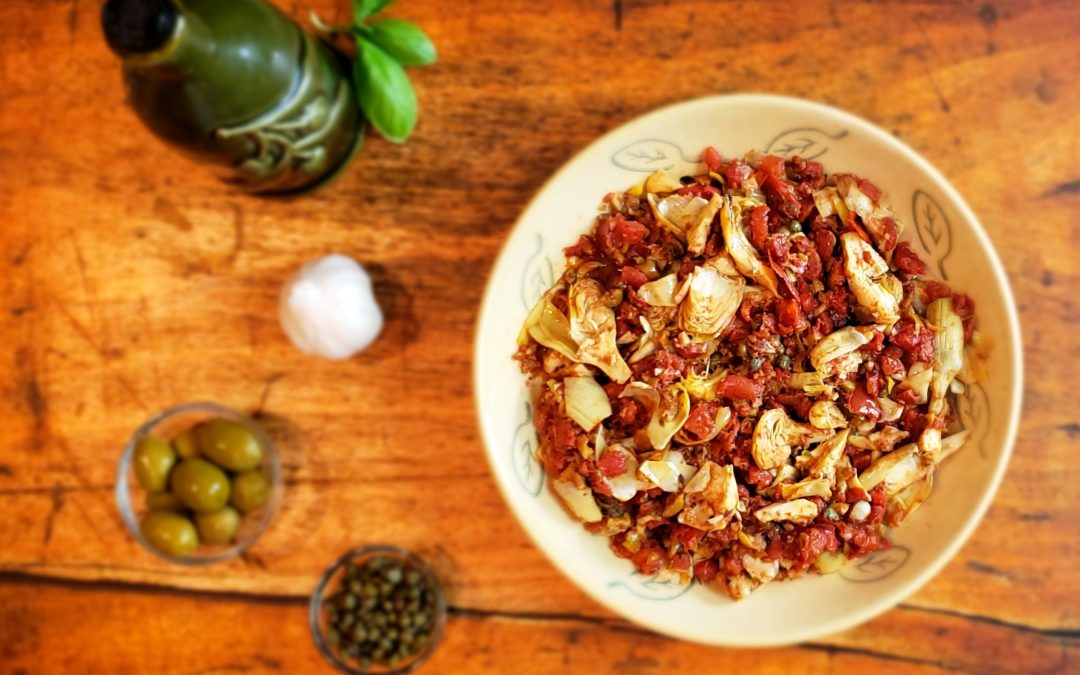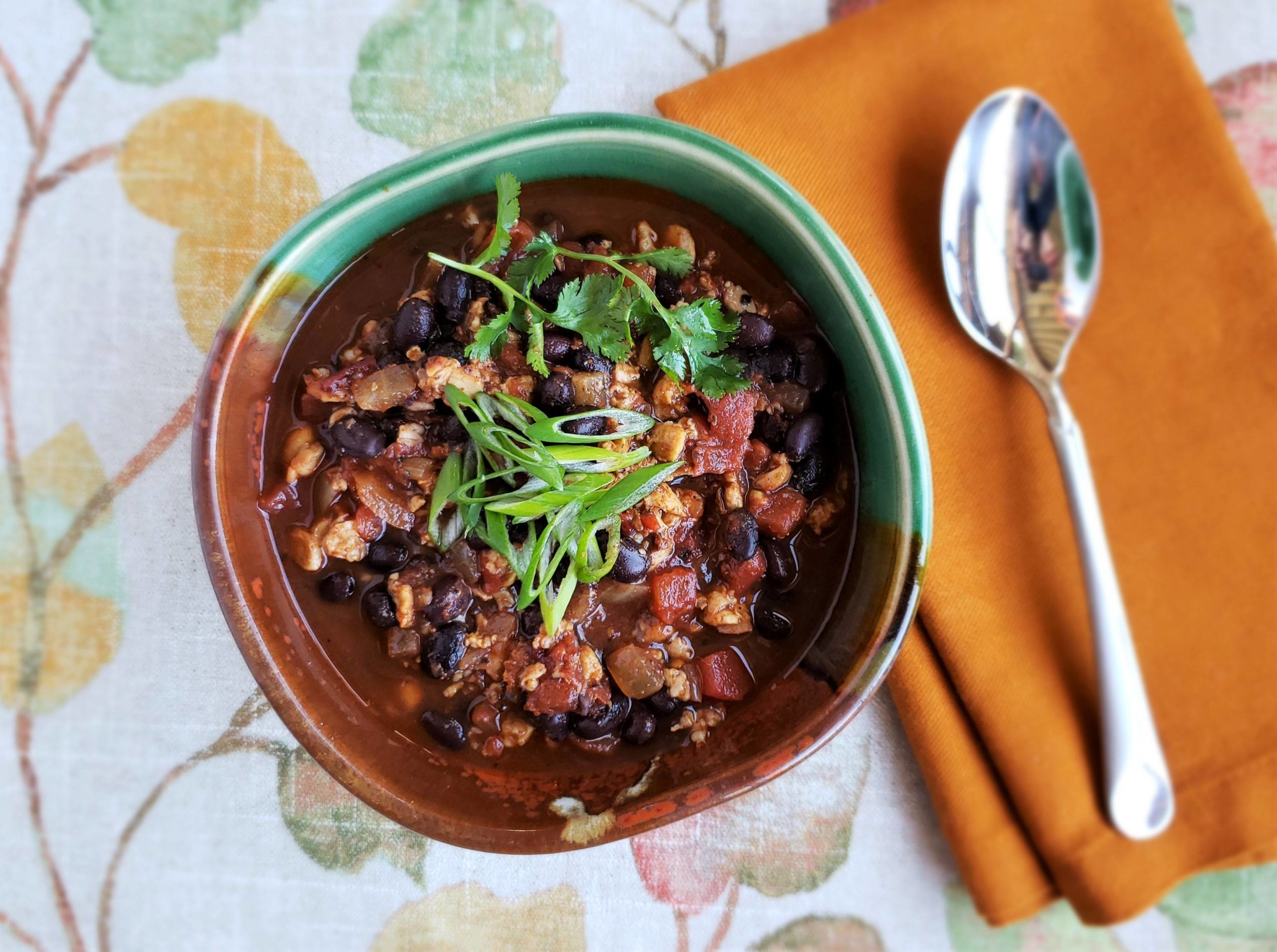Serves 6 as a complete meal with the pasta option A delicious mix of tangy, spicy and savory ingredients makes Puttanesca sauce (sugo alla puttanesca) a meal-time habit that can be made from your pantry. This popular Italian sauce commonly pairs with pasta but...

The Sweet and Meaty Taste Science of Grilled Vegetables
The Sweet and Meaty Taste Science of Grilled Vegetables
“Let’s grill tonight” translates to “let’s eat meat tonight”
in many backyard BBQs. It’s not surprising since grilled meat products create hundreds of complex aroma and flavor compounds. Grilled vegetables create less of these craveable compounds but develop delicious flavor profiles that can make them popular with kids and adult “veg-avoiders.” Whether using wood, coal or gas heat sources for grilling meat products or vegetables, the flavor differences are determined by browning reactions that depend on carbohydrates and protein.
Vegetables and meats exposed to high heat in a dry environment develop unique flavors from non-enzymatic browning reactions known as the Maillard reaction and caramelization.
Caramelization relies on sugar for creating tasty molecules whereas, the Maillard reaction requires protein and a hint of sugar for flavor development.
Flavorful Proteins
Vegetables meet two of these Maillard reaction requirements; however, the low protein content compared to meat products limits the flavor development. Meat, poultry and fish, when exposed to a high and dry heat, yield hundreds of complex Maillard aroma and flavor compounds ranging from savory and meaty to floral and earthy. Because meat products also include the simple sugar ribose, some caramelization flavors also may be detectable.
Flavorful Sugars
Caramelization is a browning process from heating sucrose or sugars such as fructose or glucose, also known as reducing sugars. Caramelization requires higher temperatures than Maillard reactions. Annette Hottenstein, Sensory Scientist and Registered Dietitian, explains that grilling typically exposes vegetables to higher heat than other cooking methods and at these high temperatures, new complex volatile flavor components become available as natural sugars caramelize.
Caramelization flavor compounds are less complex than those from Maillard reactions, but don’t disappoint with a flavor range that includes butterscotch, sherry, rum or toasty notes.
Vegetables with high levels of reducing sugars and protein such as corn, sweet potato, onions and eggplants create tasty flavors from both types of browning reactions.
“Meaty” Grilled Vegetables
Like meats, some vegetables can develop a “meaty” taste element thanks to sulfur. Vegetables with an amino acid linked to sulfur such as cysteine create more savory elements or a meatiness. Cysteine is plentiful in cruciferous vegetables and alliums like onions.
Cysteine found in onions and combined with naturally high sugar content transform onions on the grill but also explain why caramelized onions are popular additions in many meals.
Grilled vegetables also offer pleasant contrasting textures. Hottenstein shared that she particularly enjoys the crispy tips of grilled asparagus and how the heat of the grill intensifies the green flavor components while adding a smoky dimension.
Vegetable Grilling Tips
Here’s some veggie grilling flavor techniques to make “let’s grill tonight” translates to “let’s cook delicious foods” where vegetables are hogging the grill grate.
- Fresher is better: Some vegetables, like sweet corn, rapidly convert natural sugars to starch after harvest. Less natural sugars result in less flavor and sometimes a mealy texture
- Par-cook: For dense or slow-cooking vegetables such as carrots or potatoes, partially pre-cook then grill or grill the surfaces for color and flavor, then finish cooking on the warming rack.
- Coat or naked: Dry the surface of vegetables before coating lightly with oil or a marinade. Or instead grill them naked like whole eggplants or peppers for smoky, charred skin aroma compounds.
- Veggie density: Vegetables such as zucchini, eggplant, tomatoes that are less dense due to high water content grill quickly in general and even faster if sliced or quartered. It’s best to not mix them with dense vegetables, such as root vegetables, to ensure even grilling results.


Artichoke Puttanesca–Forget its Saucy Reputation

The Sweet and Meaty Taste Science of Grilled Vegetables
“Let’s grill tonight” translates to “let’s eat meat tonight” in many backyard BBQs. It’s not surprising since grilled meat products create hundreds of complex aroma and flavor compounds. Grilled vegetables create less of these craveable compounds but develop delicious...

Chipotle and Black Bean Tempeh Chili
Making chili should be an easy, homemade treat, but chili competitions and throwdowns can make it feel like it should be Instagram-ble or complex. Typically meat is central to chili, yet this tempeh chili is a contest contender for a comforting, satisfying homecooked...

Michele Redmond
French-trained Chef, Registered Dietitian Nutritionist & Food Enjoyment Activist
It's about Making Food First
Get Eat Well Academy periodic updates on easy ways to choose and cook foods that satisfy your appetite, nurture your body and make eating well a pleasure.






 The pleasure of food, good health and well-being through simple habits for eating well and flexitarian low-key cooking.
The pleasure of food, good health and well-being through simple habits for eating well and flexitarian low-key cooking. 






 Swapping out a meat-based ingredient for a plant-based one is a balancing act of texture, taste qualities (like umami) and flavors from aromatic compounds. Particularly with liver—can you think of any plant that tastes or smells like it? Please let me know if you do.
Swapping out a meat-based ingredient for a plant-based one is a balancing act of texture, taste qualities (like umami) and flavors from aromatic compounds. Particularly with liver—can you think of any plant that tastes or smells like it? Please let me know if you do.